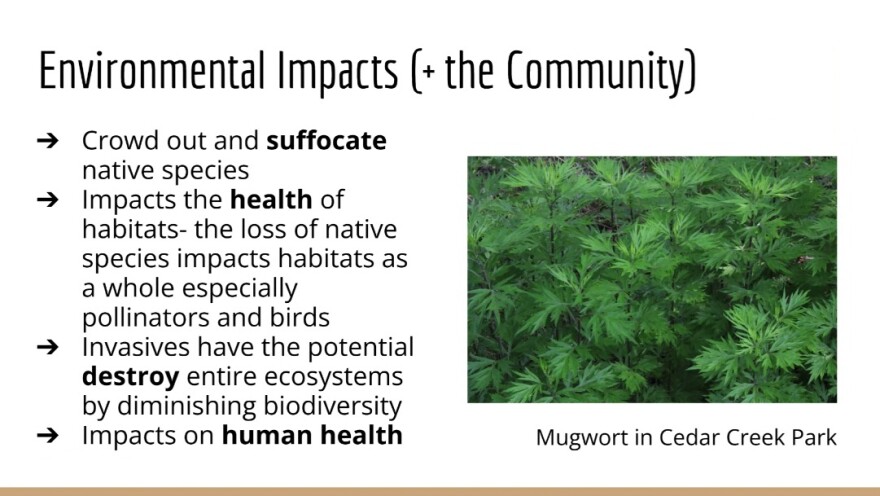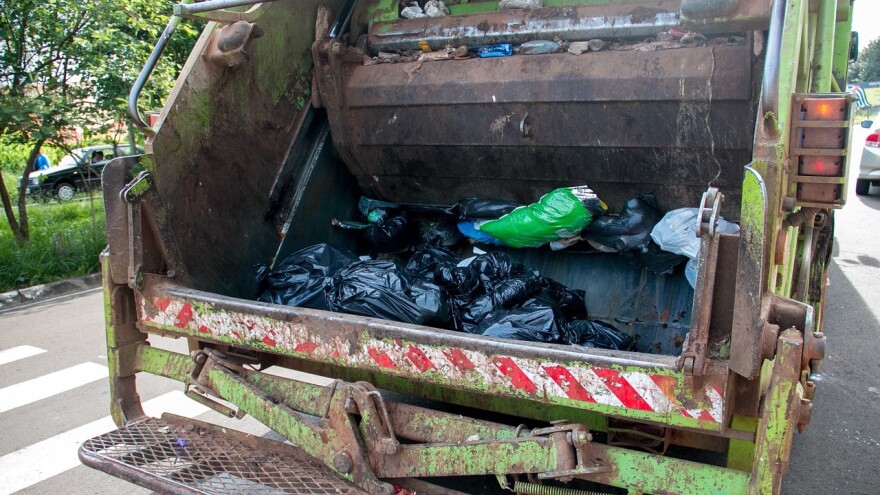ALLENTOWN, Pa. — The city’s Environmental Advisory Council is considering recommending residents be mandated to bag all trash and deposit it in cans for collection.
Loose bags can accidentally tear or be ripped open by weather, animals or during handling, contributing to litter, clogging storm drains and creating public health concerns, according to the EAC.
Council members on Monday, during their regular meeting, discussed but did not vote on the draft letter, addressed to members of Allentown City Council.
“Plastic bags may be used as municipal waste containers, at curbside for city curbside collection, provided they are sealed to prevent scattering of their contents and do not contain any rips, tears or punctures.”Allentown city code
It urges officials to “adopt an ordinance requiring that all residential trash be both bagged and placed inside a durable trash container for curbside collection.”
While reaction to the letter was positive, EAC member Craig Beavers noted the current city ordinance “does require all municipal waste, except bulk items, to be placed in a container with a fitting cover that should be covered at all times.”
However, according to city code: “Plastic bags may be used as municipal waste containers, at curbside for city curbside collection, provided they are sealed to prevent scattering of their contents and do not contain any rips, tears or punctures.”
Members discussed editing the letter to include emphasis on enforcement.
‘Residents actually want this’
City Council in October approved a new trash contract with J.P. Mascaro & Sons to began June 1. It will cost the city $16.3 million for the first year.
Ahead of the new contract, city officialslaunched a survey to collect residents’ experiences with its trash and recycling services.
The results were telling, and support the EAC’s recommendation, EAC Chairman Kyle Ropski said.
'We have the data for Allentown, and not only do we have the data for Allentown, we have the data for Allentown that supports that the residents actually want this. It’s the majority.”Kyle Ropski, EAC chair
“One of the questions that was actually included in that survey [was], ‘Would you support having trash be both bagged and containerized?’" he said.
"To me, I see that as a godsend kind of research for us."
According to the letter, “a clear majority — 62% of respondents — expressed support for requiring trash to be both bagged and containerized.”
“Because, normally, it’s always, ‘Get the data and then from other cities, [then] you need data for Allentown,’” he said.
“Well, guess what? We have the data for Allentown, and not only do we have the data for Allentown, we have the data for Allentown that supports that the residents actually want this. It’s the majority.”
Tackling invasive plants
Also during the meeting, Meredith Amerman, a Muhlenberg College student and EAC intern, gave a presentation about the environmental and the economic impacts of invasive plants throughout the city.
Invasive species, such as Japanese knotweed, mugwort, English ivy and others, can choke out native species, decreasing biodiversity and negatively impacting the local environment.
And becoming a costly nuisance for city officials and property owners.

English ivy “can grow up and around buildings, which can damage the infrastructure,” while Japanese knotweed can “break infrastructure by being able to go through concrete,” which can be harmful to both roads and buildings, Amerman said.
Estimates for damages and removal range from $85 to $3,316 per site, according to her presentation.
“Even though it’s really expensive, it will only get more expensive the more nothing’s done about it, because it will only get worse,” she said.
“That’s why it needs to be addressed, at least from the financial angle.”
There are challenges
To combat invasive plants, state officials have launched an “Invasive Replace-ive”Program, aimed at replacing invasive trees and shrubs with native plants across the commonwealth.
At the city level, there is ongoing work to eradicate invasives, including moving, targeted pesticide sprays and planting native species.
However, there are challenges, she said.
“Not surprisingly, mostly based in funding — that there isn’t enough funding to get the right amount or right kind of supplies and the right number of staff to be able to effectively manage the invasive plants in town,” she said.
“Education on invasive plants can help people understand that not all plants are good, and maybe even encourage them to help combat invasive plants in their own way."Meredith Amerman, Muhlenberg College student and EAC intern
Further education is needed for residents, too, she said.
“Education on invasive plants can help people understand that not all plants are good, and maybe even encourage them to help combat invasive plants in their own way," she said.
"Because obviously plants don’t know borders [and] are going to spread anywhere. So it’s helpful to do something on your own private property.”
Amerman had several recommendations, including: adding terminology such as “invasive” and “noxious weed” to the definition of weeds under the city’s code, increasing education and incentivizing planting natives, among others.
After her project is finalized, both the report and presentation will be posted on the EAC’s website.


